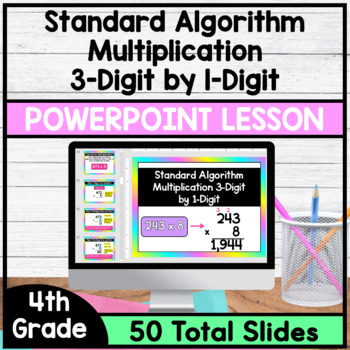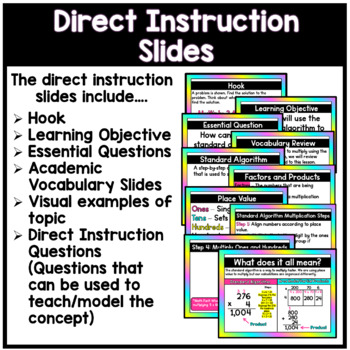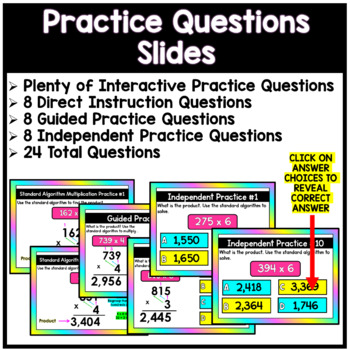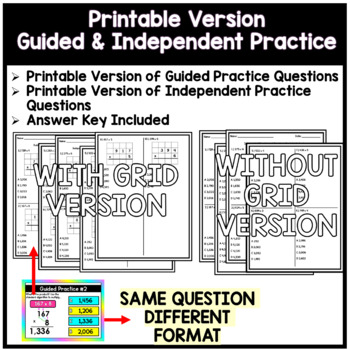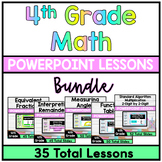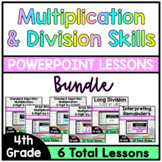Standard Algorithm Multiplication 3-Digit by 1-Digit - PowerPoint Lesson
- Zip
Also included in
- This is a Bundle of my collection of my 4th Grade Math PowerPoint Lessons. These lessons cover a variety of 4th Grade Math Skills. *These PowerPoint Lessons have everything you need to teach a lesson. Just download and begin teaching, These lessons include Direct Instruction Slides, Guided PracticePrice $110.00Original Price $157.00Save $47.00
- This a BUNDLE of PowerPoint Lessons that contain lessons over Multiplication Strategies (Area Model and Standard Algorithm). These lessons show students how to multiply a 3-Digit Number by 1-Digit Number using area models and standard algorithms and how to multiply a 2-Digit Number by 2-Digit NumberPrice $12.00Original Price $18.00Save $6.00
- This a Bundle of my collection of PowerPoint Lessons that focus on Multiplication and Division Skills. These PowerPoint Lessons have everything you need to teach a lesson. Simply download and begin teaching! Each PowerPoint Lesson has lots of practice questions and visual models that will help creatPrice $18.00Original Price $27.00Save $9.00
Description
This is a PowerPoint Digital Lesson that goes through the complete lesson plan cycle. This PowerPoint Lesson focuses on Standard Algorithm Multiplication 3-Digit by 1-Digit . This PowerPoint lesson shows students the steps to follow when using the standard algorithm to multiply a 3-Digit by 1-Digit Number. This PowerPoint Lesson is interactive and has plenty of practice questions.
*This PowerPoint Lesson has everything you need to teach a lesson. Just download and begin teaching. This lesson includes Direct Instruction Slides, Guided Practice Slides and Independent Practice Slides. (Printable Version of Guided Practice Questions and Independent Questions is Included in this Product)
*No need to create your lesson this PowerPoint is a full lesson ready to use!
What's Included?
1.) Direct Instruction Slides – These slides include hook, learning objective, essential questions, vocabulary slides, visual examples of concept slides, 8 practice questions teaching slides.
2.) Guided Practice Question Slides – 8 Total Interactive Guided Practice Questions
3.) Independent Practice Question Slides – 8 Total Independent Questions
4.) Blank Template Slides – This gives you the option to create your own questions.
5.) Standard Algorithm Multiplication Steps Anchor Chart
6.) Printable Version of Guided and Independent Practice Questions - 2 Versions included one with Multiplication Grids and one with no Multiplication Grids.
Common Core and TEKS Aligned Resource
TEKS 4.4D
The student is expected to: use strategies and algorithms, including the standard algorithm, to multiply up to a four-digit number by a one-digit number and to multiply a two-digit number by a two-digit number. Strategies may include mental math, partial products, and the commutative, associative, and distributive properties;
Common Core 4.NBT.B.5
Multiply a whole number of up to four digits by a one-digit whole number, and multiply two two-digit numbers, using strategies based on place value and the properties of operations. Illustrate and explain the calculation by using equations, rectangular arrays, and/or area models.
*Questions? Comments? Suggestions You can reach me at: theallstarteacher@gmail.com

